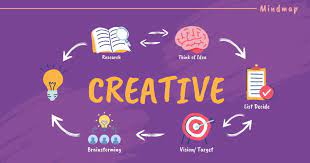Introduction
Mind mapping is a powerful tool that enables people to harness their creative thinking and enhance their cognitive abilities. It is a visual representation of information that facilitates clearer understanding and retention, improves problem-solving skills, and boosts productivity. This article delves into the concept of mind mapping, its benefits, and the fascinating ways it can be employed.
What is Mind Mapping?
A mind map is a graphical representation of ideas, concepts, or tasks that are organized around a central theme. It resembles a tree-like structure, with branches extending from the core to encompass related sub-topics or details. The technique originated in the 1960s by Tony Buzan, who believed that traditional linear notes were ineffective in capturing the multifaceted nature of human thought.
The process of creating a mind map involves placing a central concept or idea in the center of the workspace, such as on paper or digital medium. Related ideas or topics are then sketched along ‘branches’ radiating outward from this central node. Details pertaining to these topics are added using sub-branches that extend further out.
Benefits of Mind Mapping
1. Improved memory retention – The use of visual cues, colors, images, and associations in mind mapping makes it easier to recall information than traditional note-taking techniques.
2. Enhanced creativity – Mind mapping encourages lateral thinking and brainstorming by inviting participants to explore various connections between disparate ideas.
3. Clarity in thought – By visually organizing information, individuals can better comprehend complex topics and effectively process large volumes of data.
4. Structured planning – Mind maps can aid in systematically planning projects or events by outlining the necessary steps and resources required for completion.
5. Efficient decision-making – Utilizing a mind map allows individuals or teams to analyze various factors simultaneously, leading to informed choices.
6. Effective collaboration – By consolidating group ideas into a single visual, mind maps can serve as a platform for generating and evaluating new concepts in team settings.
Applications of Mind Mapping
1. Education – Students can leverage the power of mind mapping for learning complex subjects, preparing for exams, or organizing research projects.
2. Business – Professionals may use mind maps for strategizing marketing campaigns, outlining organizational goals, or brainstorming product development ideas.
3. Personal growth – Mind mapping can enhance personal goal-setting, problem-solving skills, and even facilitate the tracking of one’s daily activities.
4. Project management – With clear visualization of tasks and resources, mind maps help project managers allocate responsibilities and effectively coordinate workflows.
Conclusion
In today’s fast-paced world, understanding and retaining information is crucial for success in both personal and professional realms. Mind mapping presents an efficient method to unlock human potential across various fields. By incorporating this technique into daily routines, individuals stand to benefit from improved memory retention, enhanced creativity, streamlined decision-making processes, and ultimately maximizing their productivity.





